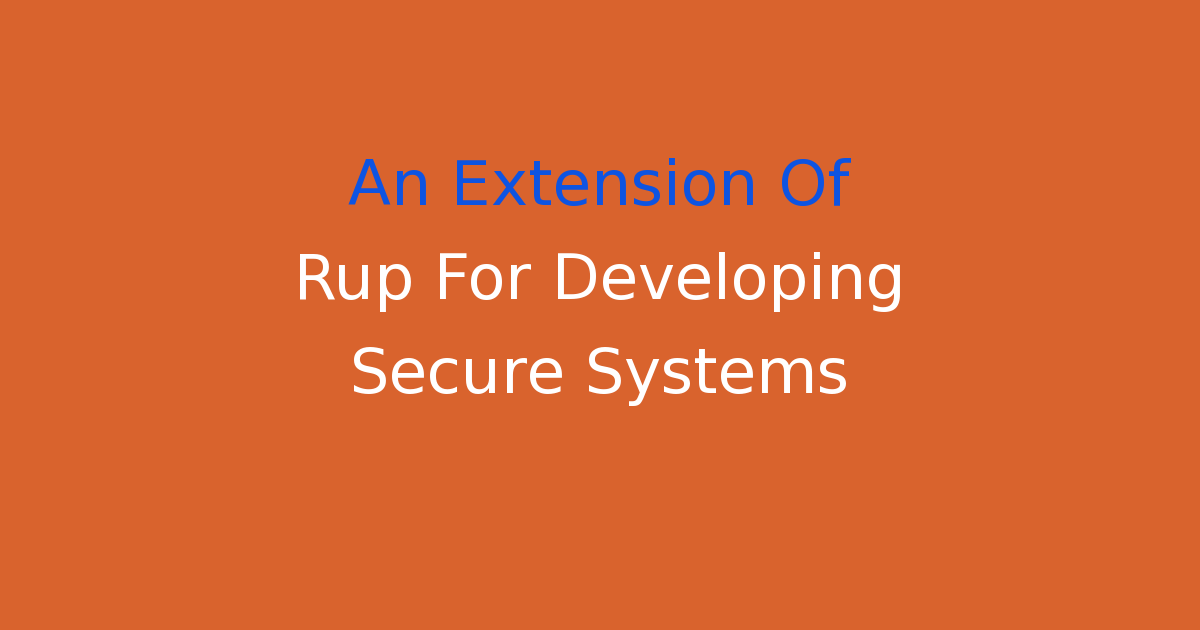Incorporating robust security measures into the development process using the extension of the RUP framework is essential for creating secure systems.
Introduction
In today’s digital age, the importance of secure systems cannot be overstated. With the increasing number of cyber attacks and data breaches, it has become imperative for organizations to prioritize security in their software development process. In this project, we will explore an extension of the Rational Unified Process (RUP) for developing secure systems. This will involve integrating security principles and practices into the software development lifecycle to ensure that the final product is robust and resilient against potential threats.
Problem Statement
The traditional software development process often neglects security considerations until the later stages of the project, leaving systems vulnerable to exploitation. This reactive approach to security leaves organizations open to significant risks and can result in costly data breaches and reputational damage. By incorporating security from the inception of the project, we can proactively address potential vulnerabilities and mitigate risks before they become issues.
Existing System
The current software development process typically follows the RUP, which focuses on iterative development, collaboration, and stakeholder involvement. While RUP provides a solid framework for managing the software development lifecycle, it lacks a specific focus on security. This can lead to gaps in security practices and leave systems susceptible to attacks.
Disadvantages
Some of the disadvantages of the existing system include:
1. Lack of focus on security throughout the development process
2. Reactive approach to addressing security vulnerabilities
3. Potential for costly data breaches and reputational damage
4. Inadequate protection against emerging threats and attacks
Proposed System
The proposed system will build upon the foundations of RUP and integrate security principles and practices throughout the software development lifecycle. This will involve incorporating security activities into each phase of the project, from requirements gathering to deployment. By embedding security into the development process, we can identify and address vulnerabilities early on, reducing the likelihood of security incidents and ensuring the final product is secure by design.
Advantages
Some of the advantages of the proposed system include:
1. Proactive approach to security, reducing the likelihood of vulnerabilities
2. Improved resilience against potential threats and attacks
3. Enhanced trust and confidence in the final product
4. Cost savings by addressing security issues early in the development process
Features
The proposed system will include the following key features:
1. Security requirements gathering: Identify and prioritize security requirements at the outset of the project
2. Threat modeling: Conduct threat modeling exercises to identify potential vulnerabilities and threats
3. Secure coding practices: Enforce secure coding practices and guidelines throughout the development process
4. Security testing: Conduct regular security testing and code reviews to identify and address security issues
5. Security documentation: Maintain detailed documentation of security measures implemented throughout the project
Conclusion
In conclusion, the extension of RUP for developing secure systems offers a proactive approach to security in software development. By integrating security principles and practices into the development process, organizations can build robust and resilient systems that are better equipped to withstand potential threats. The proposed system addresses the shortcomings of the existing process and provides a framework for creating secure software products that meet the highest standards of security. By prioritizing security from the outset, organizations can reduce the risks associated with cyber attacks and data breaches, ultimately protecting their assets and safeguarding their reputation.

